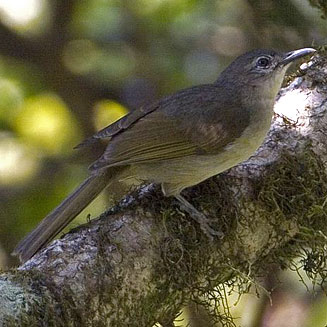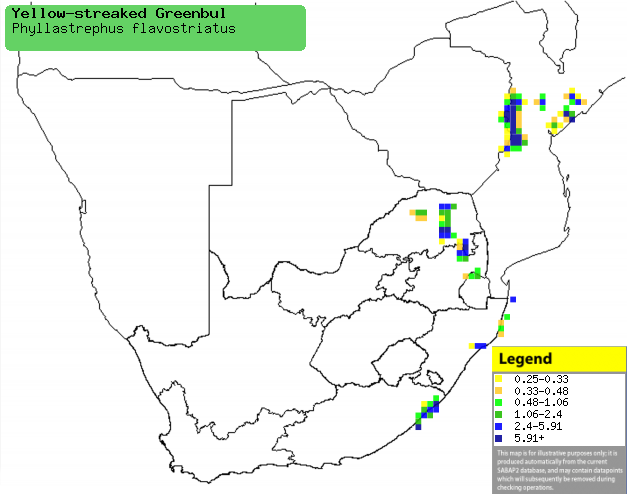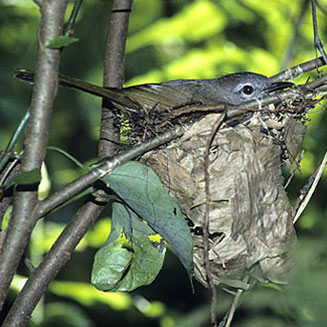|
Phyllastrephus flavostriatus
(Yellow-streaked greenbul, Yellow-streaked bulbul)
Geelstreepboskruiper [Afrikaans]; Gestreepte loofbuulbuul
[Dutch]; Bulbul à stries jaunes [French]; Gelbstreifen-laubbülbül
[German]; Tuta-amarela-estriada [Portuguese]
Life
> Eukaryotes >
Opisthokonta
> Metazoa (animals) >
Bilateria >
Deuterostomia > Chordata >
Craniata > Vertebrata (vertebrates) > Gnathostomata (jawed
vertebrates) > Teleostomi (teleost fish) > Osteichthyes (bony fish) > Class:
Sarcopterygii (lobe-finned
fish) > Stegocephalia (terrestrial
vertebrates) > Tetrapoda
(four-legged vertebrates) > Reptiliomorpha > Amniota >
Reptilia (reptiles) >
Romeriida > Diapsida > Archosauromorpha > Archosauria >
Dinosauria
(dinosaurs) > Saurischia > Theropoda (bipedal predatory dinosaurs) >
Coelurosauria > Maniraptora > Aves
(birds) > Order: Passeriformes
> Family: Pycnonotidae
 |
|
|
Yellow-streaked greenbul, Magoebaskloof, South
Africa. [photo Trevor Hardaker ©] |
|
Distribution and habitat
Occurs in patches eastern southern Africa, from
north-eastern DRC through to southern Africa. Here it is fairly common but
localised, occurring in Zimbabwe's eastern highlands and adjacent Mozambique,
north-eastern South Africa and KwaZulu-Natal. It is quite habitat specific,
preferring clearings in the forest interior, but also occupying valley bushveld.
|
 |
|
Distribution of Yellow-streaked greenbul in
southern Africa, based on statistical smoothing of the records from
first SA Bird Atlas Project (©
Animal Demography unit, University of
Cape Town; smoothing by Birgit Erni and Francesca Little). Colours range
from dark blue (most common) through to yellow (least common).
See here for the latest distribution
from the SABAP2. |
Food
It mainly eats insects, gleaning them from leaves, branches
and bark. It has a habit of repeatedly flicking its wings, which it possibly
does to flush prey. The following food items have been recorded
in its diet:
- Insects
- snails
-
spiders
- small berries
Breeding
- The nest is a flimsy cup built of twigs, dry grass, rootlets and other
plant fibres, typically attached with spider web to twigs deep in a bush's
foliage.
 |
|
|
Yellow-streaked greenbul at its nest,
Haroni-Rusitu, Zimbabwe. [photo Warwick Tarboton ©] |
|
- Egg-laying season is from October-March, peaking around
November-December.
- It lays 2-3 eggs, which are incubated solely by the female, who is very
reluctant to leave the nest if disturbed.
Threats
Not threatened.
References
-
Hockey PAR, Dean WRJ and Ryan PG 2005. Roberts
- Birds of southern Africa, VIIth ed. The Trustees of the John Voelcker
Bird Book Fund, Cape Town.
|
